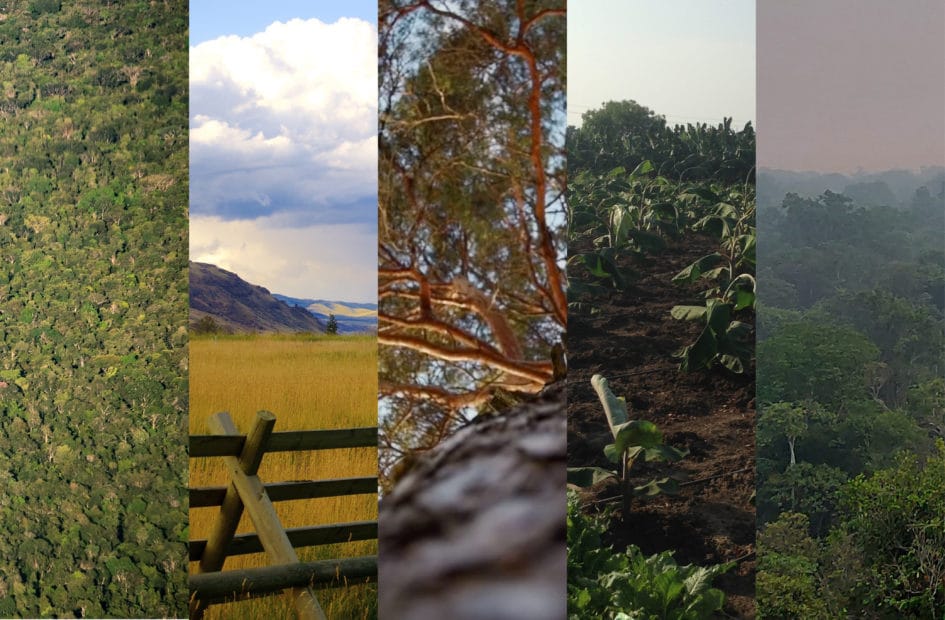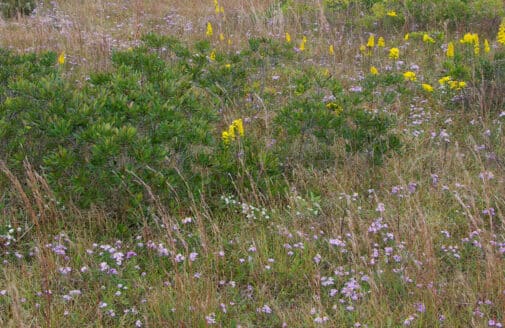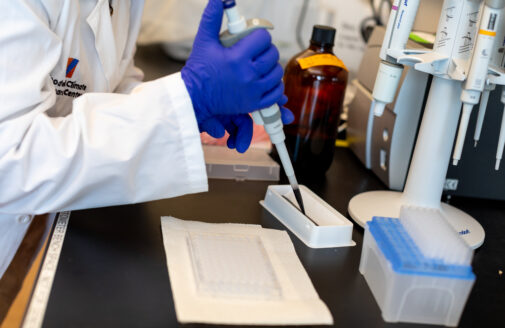Fund for Climate Solutions supports new cutting-edge projects
Summer 2021 awardees focus on understanding and enhancing natural carbon sequestration

The Fund for Climate Solutions is a competitive, internal granting mechanism that supports early-stage and high-risk, high-reward research with breakthrough potential. The Summer 2021 round of funding awarded more than $500,000 to five projects largely focused on understanding and enhancing the potential of land-based systems–from farms, to rangelands, and forests–to remove carbon from the atmosphere.
Scaling forest carbon markets: Toward a global carbon rating standard
Submitted by Dr. Wayne Walker and Dr. Glenn Bush
As both public and private sectors commit to more ambitious emissions reduction targets, forest carbon crediting has the potential to be an important market-based mechanism for mitigating climate change while protecting global forests. Forest carbon credits are currently uncertain investments due to confusion about evolving standards, and the perceived risk is exacerbated by a lack of transparency. This project seeks to promote market confidence by delivering the first ever investment-oriented forest carbon rating standard (FCRS). In partnership with Wellington Management, the FCRS will define the operational architecture for a global rating system similar to Moody’s bond ratings. By incorporating key metrics of forest carbon quality and ecological integrity while accounting for governance- and climate-driven risk, the FCRS has the potential to aid in unlocking the billions of dollars in investment needed to scale the global forest carbon market.
A rangeland carbon monitoring platform for the Western United States
Submitted by Dr. Jennifer Watts and Dr. Jonathan Sanderman
Rangelands (which include grassland, shrubland and pasture) cover nearly a third of U.S. land area and offer a large capacity to remove carbon dioxide from the atmosphere and store it in soil. Studies suggest that capacity could be increased significantly, and this is a high-priority goal for conservation and climate mitigation efforts. However, integration of rangelands into emerging carbon markets is hampered by a lack of practical methods for quantifying and monitoring carbon in rangeland systems over large regions. Our team at Woodwell is developing a cutting-edge approach for comprehensive spatial and temporal carbon monitoring in rangeland systems. This system will provide rangeland managers with information needed to quantify carbon sequestration within landscapes and make informed decisions about land use; it will also provide a platform capable of supporting carbon sequestration verification requirements for carbon markets—all at no cost to range managers.
Bias in the estimated emissions of carbon from terrestrial ecosystems
Submitted by Dr. Andréa D. de Almeida Castanho and Dr. Richard (Skee) Houghton
It is critical we understand the future capacity of forests to absorb and store carbon. To date, our understanding has been based to a large extent on the estimates of carbon emissions from Land Use, Land-Use Change, and Forestry (LULUCF), calculated by the so-called bookkeeping model. Several recent lines of evidence suggest that the growth curves used in the bookkeeping model to simulate forest growth may be biased toward rapid forest regrowth and low carbon accumulation after 100 years of growth. This project will examine the effects of modifying forest growth curves on estimated emissions, with the potential to suggest ways of refining the bookkeeping model and improving our understanding of the land carbon sink.
Decoding the regenerative agriculture revolution in India
Submitted by Dr. Jonathan Sanderman
Andhra Pradesh’s Community-Managed Natural Farming (CMNF) program is one of the largest experiments in agroecology in the world and holds lessons for regenerative agriculture work worldwide. CMNF, previously referred to as zero budget natural farming, is a method of regenerative agriculture that is promoted as a key initiative for improving human, soil, and environmental health, climate resilience and mitigation, and rural economic development. Sound, independent science is critical to understand the promise and limitations of CMNF. This project includes a five-year-long longitudinal impact assessment comparing CMNF and conventional farming across three sustainability dimensions, as well as a climate risk assessment for agriculture in Andhra Pradesh (India), and efforts to develop and disseminate replicable approaches for scaling up CMNF. This work has the potential to demonstrate the effectiveness of natural farming, and significantly influence the growth and adoption of regenerative agriculture across the globe.
Getting the word out: Support for open access publications on land and air use in Southwestern Amazonia
Submitted by Dr. Foster Brown
Southwestern Amazonia, a region with about a million square kilometers, is one of the most biologically and culturally diverse regions on the planet. It has become a key region where conflicts of development and conservation are accentuated, and where science can make a difference in land use trajectories—but only if that science is available to stakeholders and policymakers. This funding will enable open access publication of four articles that provide suggestions for public policy ranging from changing the Amazonian development model, to simplifying identification of illegal logging and deforestation, to describing how new technologies and collaboration resulted in an air quality network that could serve as a model for others.







